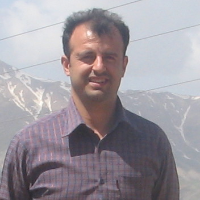Investigating the Effect of Moisture, Salinity, and the Soil’s Clay Content on the Germination and Growth of Hedysarum criniferum Boiss under Natural Habitat and Greenhouse Conditions
in addition to pasture grazing, animals are fed on such sources as manual forage, farm straw, etc. Therefore, due to various socio-economic reasons, overgrazing and forage shortage exert adverse effects on rangelands, leading to their degradation. On the other hand, excessive exploitation of rangelands and changes in their use has led to the expansion of invasive species, altering the rangelands’ species composition and influencing the relevant ecosystem’s functions and services, which, consequently, ends in the destruction of ecosystems worldwide. In this regard, in cases where the invaluable and important species are overgrazed, the improvement of the rangelands containing perennial, high-yielding, and palatable species is recommended to restore the rangeland’s production capacity, reduce the competitiveness of invasive species, and increase the vegetation both quantitatively and qualitatively. Thus, it could be argued that identifying the factors involved in the germination and growth of invaluable species in rangeland ecosystems is required for the management, improvement, and restoration of rangelands.
This study sought to investigate the effect of irrigation interval, water salinity, and the soil’s clay content on the seed germination and the height of germinated seedling of Hedyasrum criniferum which is an endangered, palatable species indigenous to Iran’s rangelands, under greenhouse and natural habitat conditions. To this end, a factorial experiment was performed in terms of irrigation interval at three levels of 7, 10, and 14 days, water salinity at three levels of <1 (0.4), 2, and 4 dS m-1, and added clay contents at three levels of 0, 10, and 20% under greenhouse conditions with three replications, using a random sampling method. Moreover, the GLM method was applied to examine the factors affecting the herbal parameters of the Hedyasrum criniferum species.
The study’s results revealed that out of the three treatments mentioned above, only the irrigation interval had a significant effect on the H. criniferum species’ germinated seedling height and its germination percentage (α = 5%), with the greatest amount of germination (77.77%) and the highest germinated seedling’s height (4.93 cm) being observed in the seven-day irrigation interval based on the comparison of means. According to the species’ response curves, while the species’ height showed an ascending trend in proportionate to the precipitation rate, it had a reverse trend in proportionate to salinity. As for the clay content, it was found that the species’ height decreased up to 25% with an increase in the clay content. However, the trend was increasing for over 25% clay content.On the other hand, the analysis of the species’ response curve in terms of the amount of germination density indicated that while the number of germinated seeds increased with an increase in the precipitation rate, it decreased with an increase in salinity. Moreover, the number of germinated seeds responded to clay content the same as it reacted to the species’ height, getting decreased with up to a 25% increase in the clay content.
as found in this study, irrigation interval is a more important factor than the other two treatments. The tolerance level of germination and seedling growth was found to be at a 14-day irrigation interval, 4 dS m-1 salinity level, and 20% added clay content. Therefore, it could be argued that lowering the irrigation intervals may help the root growth. Furthermore, maintaining the moisture at 40-0 cm away from the soil profile can facilitate root growth and thereby increase photosynthesis. However, increasing the irrigation intervals may disrupt photosynthesis by creating a shortage in the soil’s moisture and decreasing the production of photosynthate materials to be transformed into the plant’s growing parts, checking the growth of the plant’s height. Considering the fact that Hedyasrum criniferum is regarded as a very high-quality forage in Iranian rangelands based on the rangeland classification indices in terms of forage quality, and that the species contains more protein and metabolic energy and higher nutritional value than alfalfa, and also its desirable ability to stabilize the soil’s nitrogen, the species can be used to convert the abandoned rain-fed lands in semi-arid areas to forage-planted lands and restore the destroyed rangelands in natural habitats. On the other hand, it was revealed that in natural habitats, the chances for the growth of the aforementioned species increased with an increase in precipitation rate, reaching its highest points in areas with average annual 650 mm precipitation. It should be noted that the precipitation range of the species’ habitats indicates the possibility of H. criniferum growth in different climatic regions, including arid, semi-arid, and semi-humid regions. Therefore, it was found that the chances for the species' growth increased with an increase in precipitation rate from arid to semi-arid and finally, to semi-humid regions. Moreover, the study found that based on its optimal precipitation rate, the species prefers semi-humid climates.
- حق عضویت دریافتی صرف حمایت از نشریات عضو و نگهداری، تکمیل و توسعه مگیران میشود.
- پرداخت حق اشتراک و دانلود مقالات اجازه بازنشر آن در سایر رسانههای چاپی و دیجیتال را به کاربر نمیدهد.





